All season tires - pros and cons, how to choose? Blog › All-season tires: possible or dangerous
Different time year requires different qualities from car tires. But having two sets and “changing shoes” for your car with the change of weather is an overhead. Many motorists go to the trick and buy all-weather tires for wheels. But is it possible to drive in winter on all-season tires? Let's analyze this issue from the point of view of both rules and safety for the driver himself.
Why do you need winter and summer tires?
Replacing summer tires with winter ones is dictated by banal physics: the lower the temperature, the harder the rubber becomes. Accordingly, the wheel clings to the road worse, the risk of an accident increases. That is why there are two types of tires for cars:
- Summer - due to the rigidity and asymmetric tread pattern, they provide the best grip on the road, regardless of the speed of the car.
- Winter - due to the softness, they continue to perform shock-absorbing functions even in the cold. Deep tread with additional micro-pattern provides maximum possible grip on the road covered with snow or wet mud.
Using tires out of season is fraught with trouble. In particular, the loose fit of the tire to the road leads to the fact that the braking distance is extended by a third - and often it is these meters that are decisive.
WATCH VIDEO
That is why since 2015 in Russia, as a country Customs Union, a new regulation regarding the safety of wheeled vehicles has been introduced. According to its rules, the operation is prohibited:
- Summer tires - from December to February.
- Winter with spikes - from June to August.
It is curious that the ban on driving in summer winter tires oh, there are no thorns - they can be used all year round. True, such use is wasteful: it is precisely due to their softness that winter models quickly wear out in summer and become unusable.
What are all-season models?
The fact that the advantages of winter tires turn into disadvantages in summer, and summer tires in winter, prompted manufacturers to try to find a “golden mean” and create rubber that can be effectively used all year round. As a result, all-season tires were born - tires that can theoretically be used effectively at any time.
All-season tires are a compromise between the properties of winter and summer:
- The rubber alloy from which they are made does not soften so much in summer and does not “dunet” so quickly in winter.
- The tread pattern is selected in such a way as to provide at least minimal grip in all conditions. The grooves are deep, like on winter models, but at the same time, to a certain extent, asymmetrical, like on summer ones, and equipped with V-shaped openings for water drainage.
Pros and cons of all season tires
The main advantage of these models is the ability to drive on all-season tires all year round without thinking about replacing them. That is why many drivers prefer to spend money on a set of such tires once, and then only check the pressure and tread wear, not worrying about timely replacement.
However, any attempt to combine two diametrically opposed functions in a product usually leads to the fact that it starts to perform both not very effectively. The all-weather season is no exception. She:
- too noisy in summer. A rough semi-winter pattern in the warm season pretty whistles and buzzes at high speed;
- does not provide normal grip in any of the seasons. If you drive on all-weather tires in winter, you need to be prepared for the fact that the braking distance will be longer, and the car will become less responsive to the steering wheel.
- normally works only in a mild European climate. When the temperature outside is below -25 degrees, a driver trying to drive an all-season in winter is a suicide. Even worse, he risks taking away extraneous road users or passengers to the next world.
- overly elastic - and this elasticity on dry pavement in warm weather reduces handling.
- in bad weather suitable only for experienced drivers.
- absolutely not suitable for racing or off-road cars.
But does this mean that the all season is useless? No. Like every thing, it has its own niche and its own scope, where it will show itself. the best way. Everyone remembers demi-season shoes and clothes: they are hot in summer, cold in winter, but in the transitional time between seasons they are just what you need.
In the same way, the all-season should be called a “demi-season”: as long as the temperature fluctuates from plus to minus, and you don’t know what to expect in the morning, ice or dew on the pavement, such tires are an ideal solution. They do not slip much on the ice, but they do not grind on the asphalt at plus degrees.
Besides, in last years the all-season began to appear. which according to its properties automatically adjusts to the climate and the nature of the road. However, so far, such models are not very efficient and excessively expensive. It is possible that in the future such an all-season will force out summer and winter brands from the market - but so far it remains only an experiment of manufacturers.
All season marking
In the event that the car owner decides to buy new tires, he needs to pay attention to the markings applied to the tires. As a rule, the all-season is marked as follows:
- By size - here you need to proceed from specifications car.
- According to the manufacturer - the logo usually serves advertising purposes.
- By type of use - but here we need to dwell in more detail.
Depending on the characteristics laid down by the manufacturer, the all-weather season may be marked:
- All Seasons (AS) - "Any season."
- Any Weather (AW) - "Any weather."
- "M&S" (as well as "M + S", etc.) - "Mud and snow", "Snow and mud".
- "R + W" (Road + Winter) - "Road" + "Bad weather".
In practice, there are other designations. The main thing is that among them there should not be a stylized snowflake against the background of a mountain - this is the designation of purely winter tires.
Fines - Do I have to pay?
So, if someone drives in winter on all-season tires, should he be afraid that he will have to pay a fine?
In fact, as of 2017, our legislation is showing its paradox. Officially, the use of rubber out of season is prohibited. On the other hand, there is no punishment for this in 2017.
Coincidentally, the fine is paid only for driving on "bald" tires, in which the tread depth is less than 4 mm. What season it belongs to is another question. But here, too, the inspector has the right to confine himself to verbal suggestion.
Is it possible to drive on all-season tires in winter?
So, the car owner faced a problem: is it possible to drive an all-season in winter or not? Yes, there is no punishment now (as of 2017). But it's worth considering the following:
- All-weather tires wear out faster than seasonal tires.
- Its operation is unsafe.
- Despite the savings, its use is fraught with an accident.
WATCH VIDEO
Based on the position of the traffic police, in winter you can drive on tires marked "MS". However, in practice, the driver needs to decide for himself. If he is confident in his skills and his car, and is not going to drive on difficult or snow-covered sections of the track, an all-season is quite suitable. However, if the temperatures are consistently below -10 degrees, it is better not to take risks and “change shoes” for winter tires.
- summer and winter. They are used (Captain Evidence does not sleep) in the warm and cold seasons. Since driving conditions in winter and summer are radically different, automakers have taken care of the safety and productivity of driving on the roads at any time of the year. However, there is a demi-season type of tires, commonly referred to as "all-weather tires".
What are all season tires
What are all season tires? This is such a symbiosis of winter and summer tires, which has many (but not all) advantages of both types. Unfortunately, the shortcomings from highly specialized brothers are not alien to him either. To form a correct opinion about demi-season tires, you need to superficially run through the rest of the tires.
Summer tires are made from solid rubber and feature a low, wide tread with different pattern. Such structural ones are necessary to prevent premature tire wear and achieve the required coefficient of adhesion with asphalt road surface. The use of a high tread will increase the mass of the tire and reduce the contact patch. Usage summer tires recommended at the time of the year when at night the air temperature does not drop below + 7 C 0 . Otherwise, the rubber becomes more rigid and under increased loads its wear increases (there is a decrease in the natural reversible deformation), it may crack or burst. 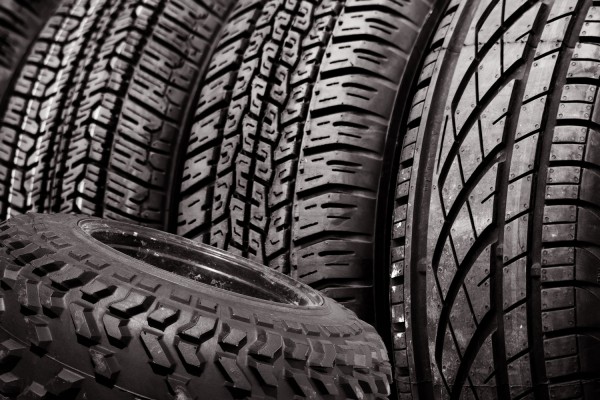
People who operate summer tires in winter on ice are especially “respected” by traffic police, ambulances and other vehicle owners for quite natural (for each their own) reasons
Winter tires are somewhat different from summer tires in material and construction. The raw material for their manufacture is already softer rubber, which in the cold becomes hard enough for operation. The tread is deeper and smaller for better traction in the presence of snow. To increase the coefficient of adhesion to the road surface (asphalt) in icy conditions, the application of spikes or a special small zigzag tread pattern (the so-called Velcro) is used.
The operation of winter tires in a season not intended for it causes other road users to best case bewilderment. Since in this case fuel consumption increases significantly, driving deteriorates, the road surface is damaged (if studded tires are used), and tire wear increases many times over.
All-season tires are made from medium hard rubber with a relatively low tread for more or less tolerable use all year round. The most optimal limits for the operation of all-seasons are from +5 to -10 (minimum) C 0 in a mild climate without ice and heavy snow cover on the road. In general, this range is much wider, but at the extreme temperature values, a significant decrease in the performance of rubber is observed. On a slippery road, in severe frost, demi-season does not behave much better than summer tires. At high temperatures, the tire is subject to increased wear, as it wears out faster, and at very low temperatures, it does not quite meet the requirements for road safety (difference from tires for winter driving).
Pros and cons of all season tires
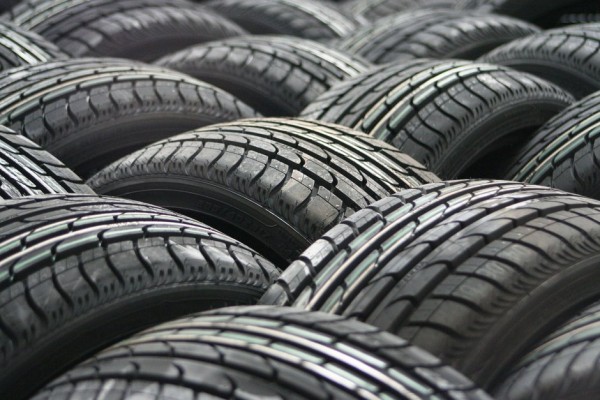
Despite the low popularity, there are still drivers who prefer the operation of demi-seasons.
Advantages:
- Much cheaper than winter tires. The price varies in the same area with summer tires.
- No need to "change shoes" when the seasons change.
- In the conditions of a shifting winter (once it snows, then it rains), they have proven themselves quite well, because they are combined.
- Low noise on asphalt pavement.
- At the junction of winter and spring, when the owners of winter tires are tormented by the question of "changing shoes", the owners of all-season tires are dealing with more pressing issues.
Flaws:
- Year-round wear (seasonal tires wear out only for a maximum of six months).
- In conditions of average winter and summer, all-season tires lose in almost all respects to specialized tires.
- In the warm season, the tire will "whistle".
- In aggressive driving conditions, the effect of use is somewhere in the area of \u200b\u200ba "bald" tire.
- On ice, in snow, severe frost The use of demi-season tires is a factor that increases the likelihood of loss of vehicle control.
Therefore, the use of this type of tires is recommended only in countries and regions where the climate is mild and the temperature very rarely drops significantly below -5 0C. Even the manufacturers of demi-season tires do not cease to warn about this.
Demi-season tire marking
At times, all-season tires are confused with winter tires. This is due to the similarity of the designation of the type and type of product. According to international standards for marking and designation, all tires that are allowed to be used in the winter are marked with the marking “M + S” (Mud & Snow - snow and mud). However, tire manufacturers add a snowflake and mountain icon to indicate a product that must be used exclusively in winter time. All-season tire labeling has only the abbreviation "M + S" without any badge.
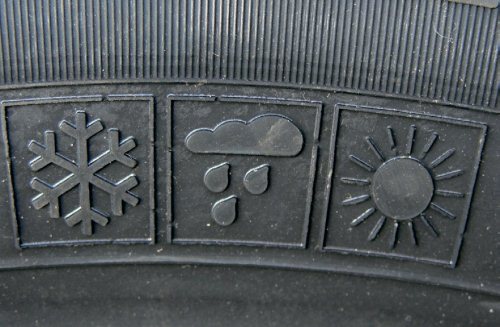
The marking that is applied to the tire
- You need to pay attention to the tire manufacturer and its model. These inscriptions are applied to the side surface of the tire. (Rosava BTs-17, Cinturato P 7).
- Tire frame structure. Usually indicated on English language(TUBELESS RADIAL - tubeless radial).
- If the tire has an asymmetric tread pattern, then there must be an inscription that indicates exactly how the tire should be installed.
- DOT control. Department Of Transportation - Department of Transportation of the most democratic country in the world. This marking is an indicator of the safety of using the tire and a kind of product quality standard. Today, most countries in the world do not allow tires for sale that do not have a certificate of passing this examination. The coded designation indicates here: manufacturer and manufacturing plant, standard size, production date and other information for the issuing company.
- The ECE (Economic Commission for Europe) certificate informs that the tire has been tested for compliance with physical characteristics, dimensional compliance and speed limits. The designation consists of the letter "E" and numbers that indicate the country that issued the certificate, as well as the individual tire code (E3 123456).
- In accordance with Directive 2001/43 of the European Union, a tire must receive a noise test certificate. The marking is located near the ECE designation (0123456-7 e8).
- W.I. (tread wear indicator). Located at the bottom of the tread grooves in the form of 1.6 mm (2/32 inch) high strips of protrusions, usually red, but another can be used. When the tread is worn down to the level of the indicator, its further operation is not safe and the tire must be replaced.

Consequently, having information about passing the standard control of tires, you can not only distinguish a fake from a quality product, but also choose a kit to meet your own needs.
All-season tires are a versatile and most cost-effective solution in terms of vehicle maintenance. The owner of such rubber does not need to renew tires twice a year, which results in significant savings. Nevertheless, operational aspects that impose restrictions on the use of this type of tire also make themselves felt. But it depends on the region in which all-weather tires are used.
Reviews note that the harsh winter does not contribute to the favorable operation of vehicles with universal tires. As a result, we have to find a compromise between climate restrictions and financial and practical expediency.
General information about all-season tires
According to the classical definition, an all-season tire is a rubber capable of providing sufficient performance in temperatures above 0 degrees. The practice of using is not so unambiguous in the conclusions, but initially it is worth adhering to this particular rule, ignoring more subtle nuances. The fact is that all-weather tires in winter are not able to demonstrate optimal traction with problematic surfaces due to the lack of studs. The tread configuration of such rubber is more oriented towards drainage. On the surface, you can find an abundance of branched grooves and lamellae, designed for safe mating when driving on a watery surface in autumn or spring.
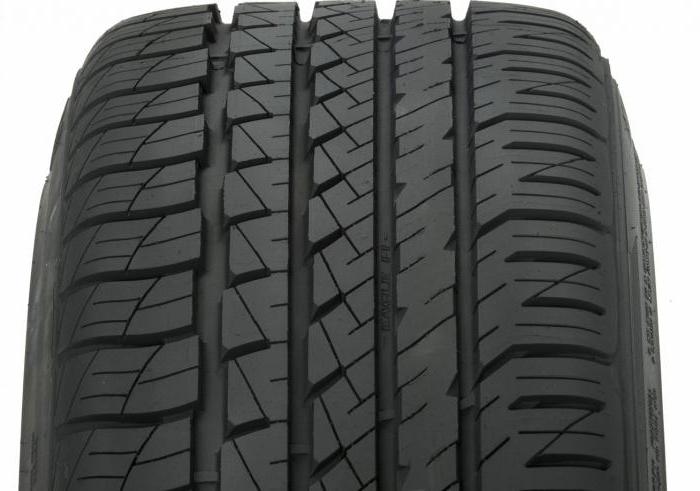
Another feature is the increased hardness of the structure. For the winter period, soft studded tires are used, which have sufficient flexibility and tenacity for confident movement on ice and snow. In this case, we consider a typical Scandinavian Velcro rubber, devoid of pronounced protectors. Getting rid of spikes is already due to the fact that all-seasons are also sharpened for operation in summer conditions, where such inclusions are not required at all. Therefore, this rubber can be considered as a compromise universal option, but not specialized for certain weather conditions.
Varieties of models
Within the segment, all-season tires are distinguished by the type of so-called tread. In essence, this means the direction of the tread pattern. The most common symmetrical pattern without directionality, characterized by comfort in control and low noise level. This solution is suitable for premium family or business models where there is no need for pronounced athletic qualities. The non-directional asymmetric pattern ensures stable contact with the road under intense loads - for example, when making a sharp turn. Therefore, this option is suitable if you need all-season tires for SUVs that require tighter control mechanics. Lateral stability also allows the use of such tires in some models of the sports segment.

The directional symmetrical tread is specially designed for hydroplaning conditions. That is, if you plan to regularly operate the car on a wet road, then all-weather directional tires will do. Reviews indicate that the wide divergence of the grooves of the symmetrical tread provides effective drainage from the contact patch with the road. This option often recommended for rear-wheel drive models, because during the passage of a problem area, the front wheels “dry” the coating with treads, which makes it possible to easily control the rear wheels in the prepared area in the future.
Universal off-road tires
There is a special class of tires marked A / T. In accordance with a strict classification, such tires are not included in the general group of all-season models, but both categories have many similarities. In particular, all-season tires for SUVs are designed for use on hard surfaces and off-road conditions with gravel, mud, etc. Such tires combine balanced handling and comfort qualities. Actually, rubber A / T has similar properties, in which the tread is more pronounced.
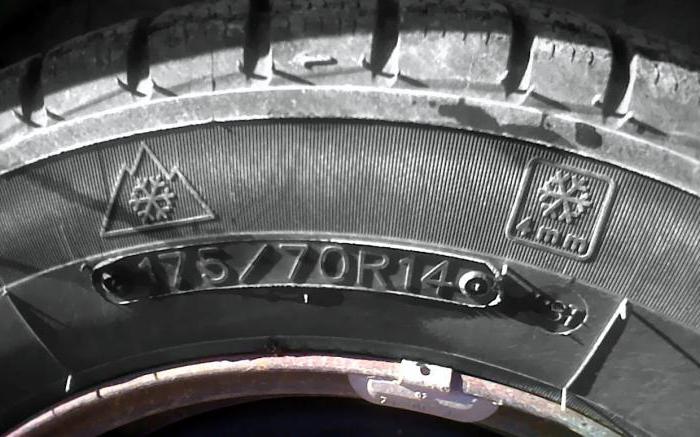
The main thing that makes it difficult to attribute the segment of universal off-road tires is the configuration of the pattern. In this case, the protector has a large height, width and contact area. At the same time, the coupling qualities of the A / T modification are guaranteed for more high level, which is already determined by the mass of the car itself. Even all-weather tires for the Niva of a modest R15 size will provide sufficient traction with problematic coverage due to the tread features.
Characteristics of all-season tires
The main characteristic is the already mentioned standard size. On the market you can find tires with diameters R14-R17 in the middle range. From a safety point of view, stopping distance is also important. All-season tires are considered the least reliable in some respects, as they have the longest stopping distance. This applies, for example, to braking on a dry surface - on average, this requires 50-52 m. Unless winter tires in such conditions show a less attractive result at 57 m. Not the best indicator in snow conditions - 42 meters versus 29, required by winter tires to stop. However, much depends on the parameters of the tread. So, for normal cars and motor vehicles, its depth can be 0.8-1 mm. If all-weather tires are required for the Niva or a small van, then we can talk about 1.5 mm. For buses and trucks, tires with a tread depth of 2 mm or more are recommended.
Goodyear Vector 4Seasons tire reviews
According to many motorists, this is the best option if you plan to drive on dry and snowy surfaces. The creators of this rubber provided it with diverse characteristics, which ultimately affected the balance in the accuracy of reactions and overall control reliability. Only a large braking distance has become a serious drawback that characterizes this all-weather rubber. Reviews of purely winter operation note that the rubber is suitable for regions with European mild frosts. However, experimenting in harsh Siberian conditions is not recommended.

As for the wet autumn coverage, the behavior of the Vector 4Seasons tires is quite consistent with the typical one. But the developers still focused on light snow coverage, which far from any universal-purpose Velcro rubber can handle.
Today we will look at all-season tires, their pros and cons, and how to choose all-season tires.
Declining living standards, rising prices and general income instability are forcing motorists to seek better ways for savings. A popular solution is saving on car tires.
And really, why spend money on summer and winter tires when you can buy all-season tires and drive all year round. But is everything so simple? Is it worth saving?
What is the difference between all-season tires and the rest?
The first "all-weather" was on the conveyor in 1977, and citizens of the United States became the happy owners.
The new product caused a flurry of criticism, which forced the production to be stopped in the same year. A follow-up attempt by Goodyear in 1979 met the same fate.
The new product immediately fell in love with the motorist and took root in countries with a warm climate.
As for temperate countries with cold winters, the option of all-season tires is far from ideal for them.
Experiments have shown that already at -7 degrees Celsius, the "all seasons" rubber loses its elasticity, traction decreases and the braking distance increases by 50% (compared to winter tires).
Many motorists believe that all-season tires are a good option. And here it is not.
"All season" is a cross between a summer and winter tire, so ideal characteristics not worth the wait.
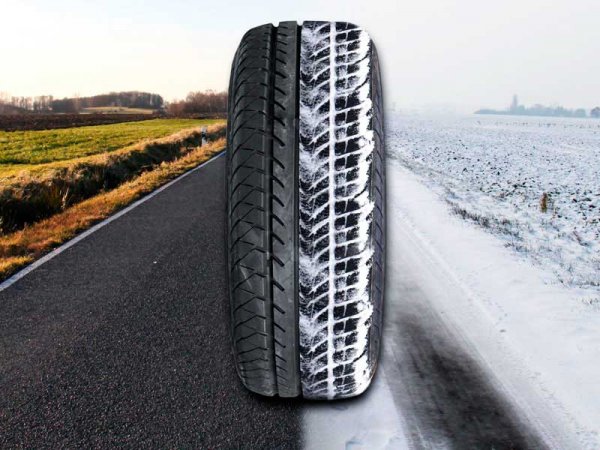
All-season tires - tires that have a "rare" pattern (when compared with winter tires) and a less soft composition (compared to summer tires).
All-weather tires provide good grip in the warm season, but will be useless in loose snow and ice.
You can recognize all-season tires by the inscription "All seasons".
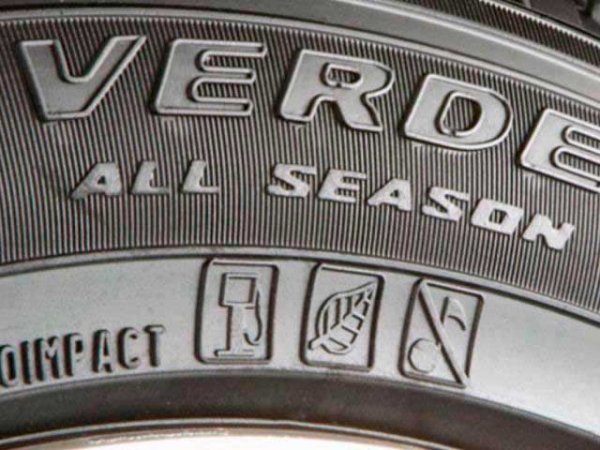
In practice, this designation is conditional. You can ride an "all-weather" at temperatures down to -5 degrees Celsius.
When the temperature drops from -5 degrees and below, the rubber of the all-weather tire begins to “tan”.
The reason is the use in the manufacture of harder rubber, which is close in characteristics to the material of summer tires.
You can recognize an all-season tire by its tread, which combines the characteristics of summer and winter tires.
Most "all seasons" tires have a round sidewall, split sipes and wide grooves.
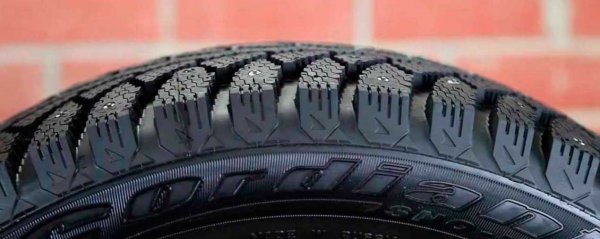
In the production of all-season tires, standard materials are used - carbon black, rubber, silicic acid, resins and oils, sulfur, various activators and environmental fillers.
Manufacturers are actively working on a composition that can show best performance over a wide temperature range.
Unfortunately, this doesn't always work.
Pros and cons of all season tires
To understand how good or bad all-season tires are, you need to know their advantages and disadvantages.
Let's pay special attention to these points:
1. Advantages of all-season tires:
- Saving time. There is no need to change tires in autumn and spring;
- Saving money. There is no need to buy two sets of tires (winter and summer). In addition, many problems with go away, because they are always on the car;
- Multifunctionality. Winter can be different (including warm). At right choice the all-weather tire will perfectly cope with the tasks and on snow.
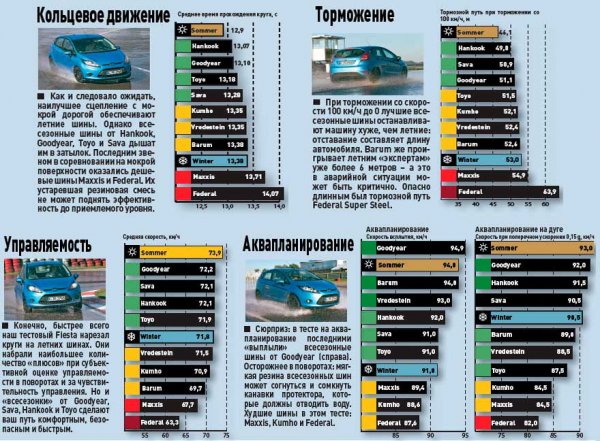
2. Cons of all-season tires:
- On a winter road, all-season tires lose to their winter "brothers". They behave badly on ice and on packed snow;
- Rubber has low elasticity, so at low temperatures it becomes hard. This, in turn, degrades the performance of the rubber;
- The all-weather tire behaves well up to 5-7 degrees of frost. After that, she "dubs" and almost completely loses her functions;
- High wear rate. Since tires are used all year round, they wear out twice as fast;
- It is better not to use all seasons rubber at high temperatures - it becomes soft, which leads to increased wear and poor handling.
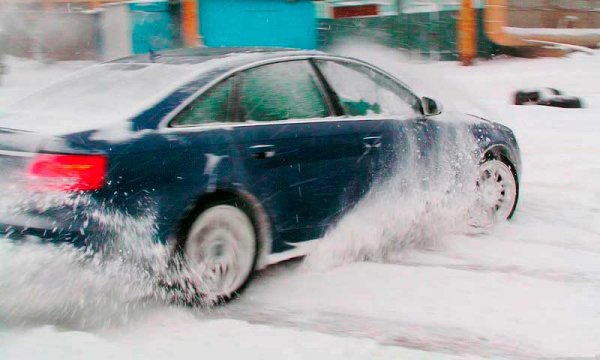
Features of the choice of all-season tires
When buying all-season tires, pay attention to the following aspects:
1. Manufacturer.
Most motorists prefer domestic tires for the reason that they are cheaper.
Unfortunately, the quality of all seasons tires of local brands is far from ideal.
The disadvantages of such products are a small temperature range, high speed wear and so on.
Tires from foreign manufacturers, such as Cooper, Dunlop and others, look more preferable, but more on that later.

2. The quality of the tread.
Make a choice taking into account the conditions in which the car will be operated. So, tires are produced with a bias for summer operation (with a smaller tread and additional slots).
The second type of tread is for country driving. Its difference is a large number of outlets for removing water, dirt and snow.
The third type is for motorists who value maximum grip and increased cross-country ability. But their main disadvantage is high when driving at high speeds.
Pay attention to the load capacity, speed index, as well as the compliance of rubber with international quality standards.
When choosing a product, try to take rubber with a small margin for the main parameters.
For example, the designation of the all-season tire Debica Navigator 2 165 / 65R14 79T can be deciphered as follows.

- 165 - profile width (in mm);
- 65 - an indicator reflecting the ratio of the profile height to width (expressed as a percentage, not in millimeters, as many people think);
- R is a symbol indicating that the tire is radial;
- 14 - landing diameter, in inches;
- 79 - load index. It determines the maximum load on each of the wheels at top speed. Index 79 is equal to 437 kilograms;
- T - speed index. From it you can find out at what maximum permissible speed it is allowed to drive on such a tire with the greatest load. T - 190 km / h.
Read more here, all about.
Also on the all-season tire must be the inscription "All seasons".
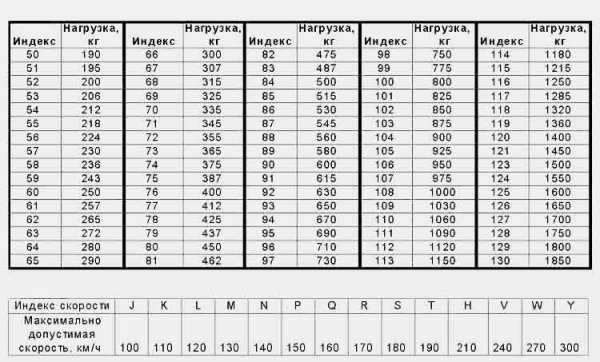
All season tire manufacturers
There are many manufacturers worthy of attention in the all-season tire market.
Among them it is worth highlighting:
1. General Tire- plant located in North Carolina, United States of America. In fact, it is a subsidiary of Continental. Year of foundation - 1915.
The plant produces tires for a wide range of vehicles - cars, medium-sized cars and trucks.
The brand's products are delivered directly to the conveyors of many manufacturers - BMW, Ford, Mercedes, Toyota, Nissan and so on.
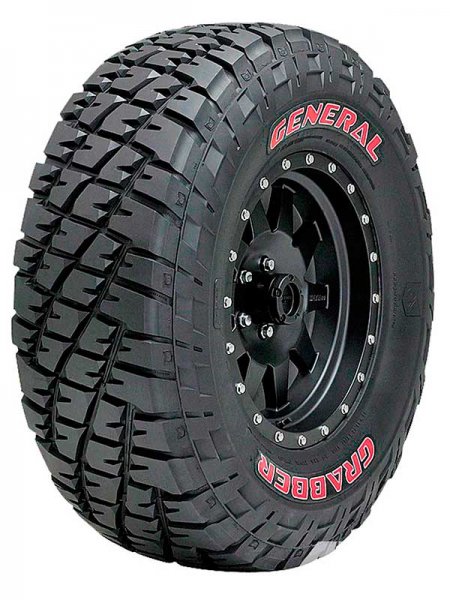
2. Bridgeston- Japanese factory, opened in 1931. It was he who was the pioneer in the creation of radial tires.
In 1988, Bridgeston bought another Firestone plant, considered the second largest in the US.
The company has earned its trust thanks to high quality products and excellent characteristics. This is confirmed by the active use of tires from this manufacturer in Formula 1 racing.
Today, the enterprise has more than 150 factories at its disposal in almost three dozen countries of the world.

3. Kumcho Company- Korean manufacturer of winter, summer and all-season tires.
By the way, all-season tires are made for various kinds driving is comfortable and fast.
The well-designed tire pattern of this brand provides excellent grip when driving on any road.
Kumcho has been in business since 1950. Since 1991, the manufacturer has entered the top ten tire factories.
The emergence of new developments, the renewal of production, research and the introduction of new technologies - all this allows the company to be one of the leaders in the production of tires.
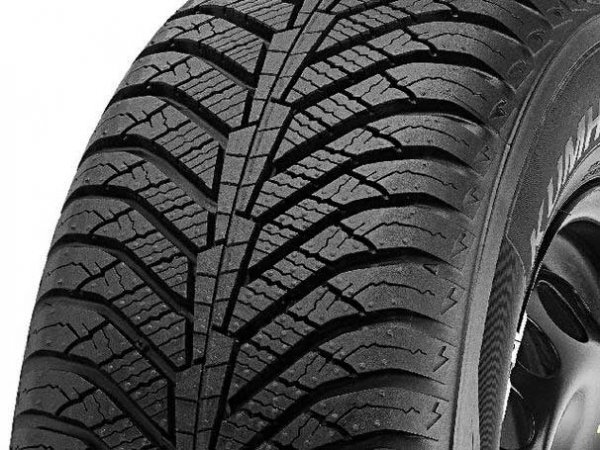
Only two Korean factories produce about 35 million tires a year.
Kumcho produces tires for racing cars, industrial and agricultural vehicles.
4. Company GoodYear is one of the oldest tires on the market.
The foundation of the new brand was laid in 1839 when Charles Goodyear (a famous inventor) managed to vulcanize rubber.
In 1898, the brothers had their own tire manufacturing company. In 1908, the first tires began to be supplied to the Ford factories.
In 1985, the first radial tires for aircraft appeared, and in 2005, a tire was launched on the market that can run even after a puncture. Today, the company's sales are over $15 billion.
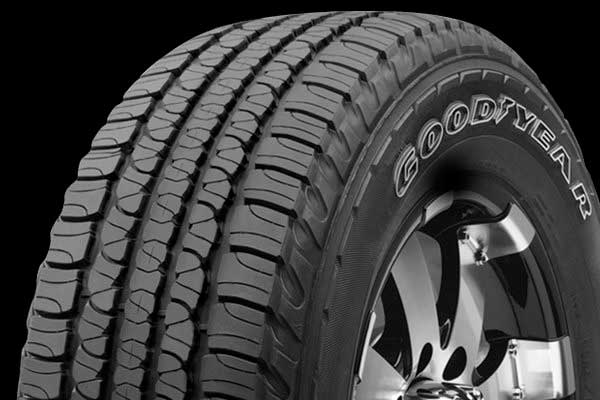
5. Michelin- a French manufacturer focused on the production of truly quiet tires.
Tires of this brand can be found for any car and any type. The company was founded in 1889. Permission for the manufacture of tires was obtained in 1891. After another 16 years, the first company appeared abroad (in Turin).
During the work, Michelin absorbed a dozen more small tire manufacturers.
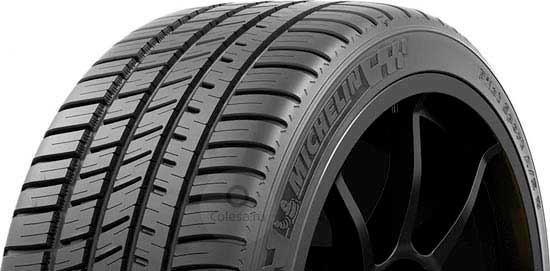
For a long time, the company was focused on sports cars, but today tires are produced for a variety of vehicles - aviation, large-sized, agricultural, and so on.
To meet customer needs, manufacturers car tires developed a novelty - all-season tires. For several years now, there has been a massive advertisement for universal tires that do not need to be changed twice a year. Our article "all-season tires pros and cons" will dot the i's.
It is worth remembering that rubber is like a shoe for a car. By analogy with shoes for motorists, all-season tires are a compromise between summer sandals and winter boots. It is difficult to imagine such a hybrid of shoes, let's consider whether there is a place for all-weather shoes for a car?
First of all, let's see what is different winter tires from summer. For winter tires are made of much softer grades of rubber than for summer. Soft rubber is needed for better grip on slippery surfaces, in addition, soft rubber tolerates low temperatures, it is not characteristic of "stiffness". Winter tires have a deeper tread pattern, again to provide better grip. Summer tires as smooth as possible, designed for asphalt, unpaved surfaces, dirt and wet road surfaces. Winter tires have several types of protruding elements that help maximize grip on snow and ice. These are Velcro and spikes. In addition, winter tires are covered with villi, again for better grip.
Since this is a compromise, then its properties are compromised. All-season tires are made from flexible grades of rubber that are harder than winter tires but softer than summer tires. Its tread pattern is wider and deeper than that of summer, but inferior to winter. All-weather tires are covered with spikes or Velcro, like winter tires, but their number and effectiveness are lower. Velcro all season tires smaller in size and have light adhesive properties. As for the studs, there are fewer of them than on winter tires, and due to their miniaturization, they provide weaker grip on the winter road (but are more acceptable for the asphalt of unpaved roads in the summer).
The result is a hybrid of summer and winter shoes with the following properties.
Summer. All season tires pros and cons
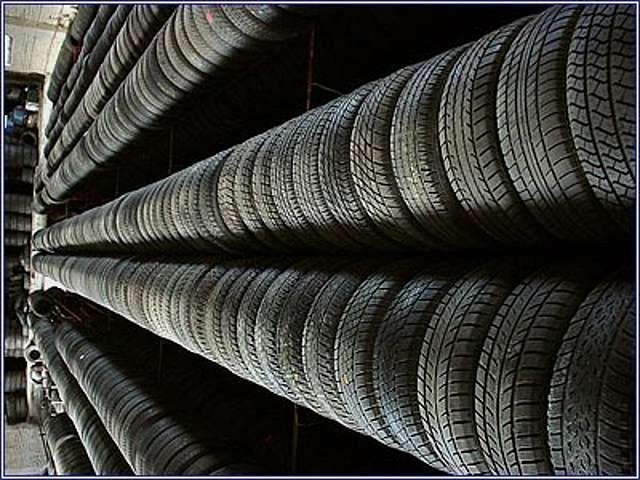 All-weather tires do not tolerate high temperatures; they can even melt on hot asphalt. Due to melting, this rubber can last less than one season. Spikes, Velcro, antennae, quickly become unusable on dirt and asphalt roads, they fly off and deform. This means that tires are no longer suitable for winter. In addition, due to the softness and the presence of textured elements (thorns, Velcro, antennae), the load on the engine increases, fuel consumption can be more by 2-3 liters per 100 km. In addition, the same textured details reduce the off-road patency of the car (the exception is liquid mud, here spikes and Velcro will help you get out of the trap). Even an experienced driver will feel that a car on all-weather tires has poor maneuverability and is harder to drive. Total - high flow fuel, rapid tire wear, difficulty driving.
All-weather tires do not tolerate high temperatures; they can even melt on hot asphalt. Due to melting, this rubber can last less than one season. Spikes, Velcro, antennae, quickly become unusable on dirt and asphalt roads, they fly off and deform. This means that tires are no longer suitable for winter. In addition, due to the softness and the presence of textured elements (thorns, Velcro, antennae), the load on the engine increases, fuel consumption can be more by 2-3 liters per 100 km. In addition, the same textured details reduce the off-road patency of the car (the exception is liquid mud, here spikes and Velcro will help you get out of the trap). Even an experienced driver will feel that a car on all-weather tires has poor maneuverability and is harder to drive. Total - high flow fuel, rapid tire wear, difficulty driving.
Winter

All-season tires in winter do not provide proper grip. It is not soft enough, there are not enough elements on the surface of the tire that adhere to the road surface. Additionally, spikes or Velcro are smaller and have less traction (after all, these tires are designed for asphalt!). Insufficiently soft rubber tans in cold weather and can crack and crumble corny. The main disadvantage is that the car can lose control, the risk of an accident is high.
As you can see, the properties of all-weather tires are such that it is not suitable for our climate with its hot summers and frosty winters. All-season tires wear out too quickly, moreover, their use directly threatens the life of the driver or, at least, his property (car).
In order not to take risks, professionals recommend not trying to save money, but purchasing two sets of tires with pronounced properties of summer and winter tires. As practice has shown, two sets will eventually cost less. Take care of yourself and do not enter into the marketing moves of manufacturers.
Below we give some reviews of the most popular all-season tires.
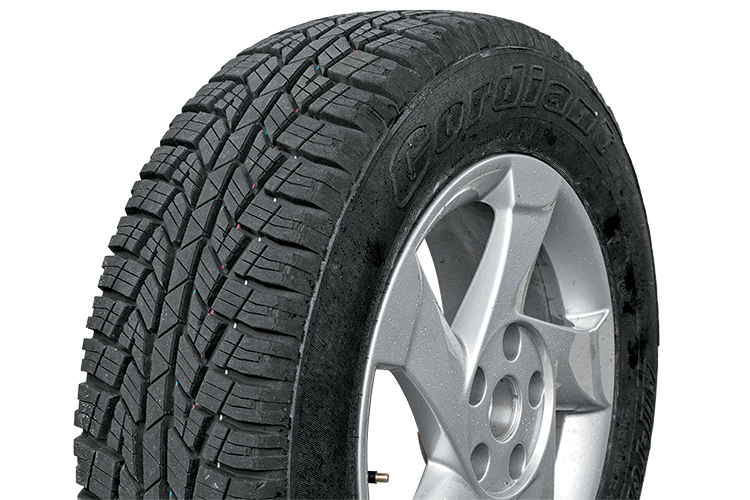
Tires from Cordiant have excellent grip and good durability. The new aggressive tread design provides good traction even in the toughest conditions. The tread pattern is extended to the sidewall. Thanks to a reliable carcass, tires will last more than one season.
Water drainage and pollution prevention are provided by special grooves, which are expanded in the shoulder area by forty degrees. Tires are made from a new rubber compound using the latest technology.
Mps-125 by Matador

The all-season tire has excellent performance on dry, snowy and wet surfaces. The quality characteristics of the tire were obtained thanks to a special optimized directional tread pattern, which is typical for winter tires. The main advantage of these tires is versatility, efficiency, durability and reliability. Also, the advantages include the absence of the need to change tires throughout the year.
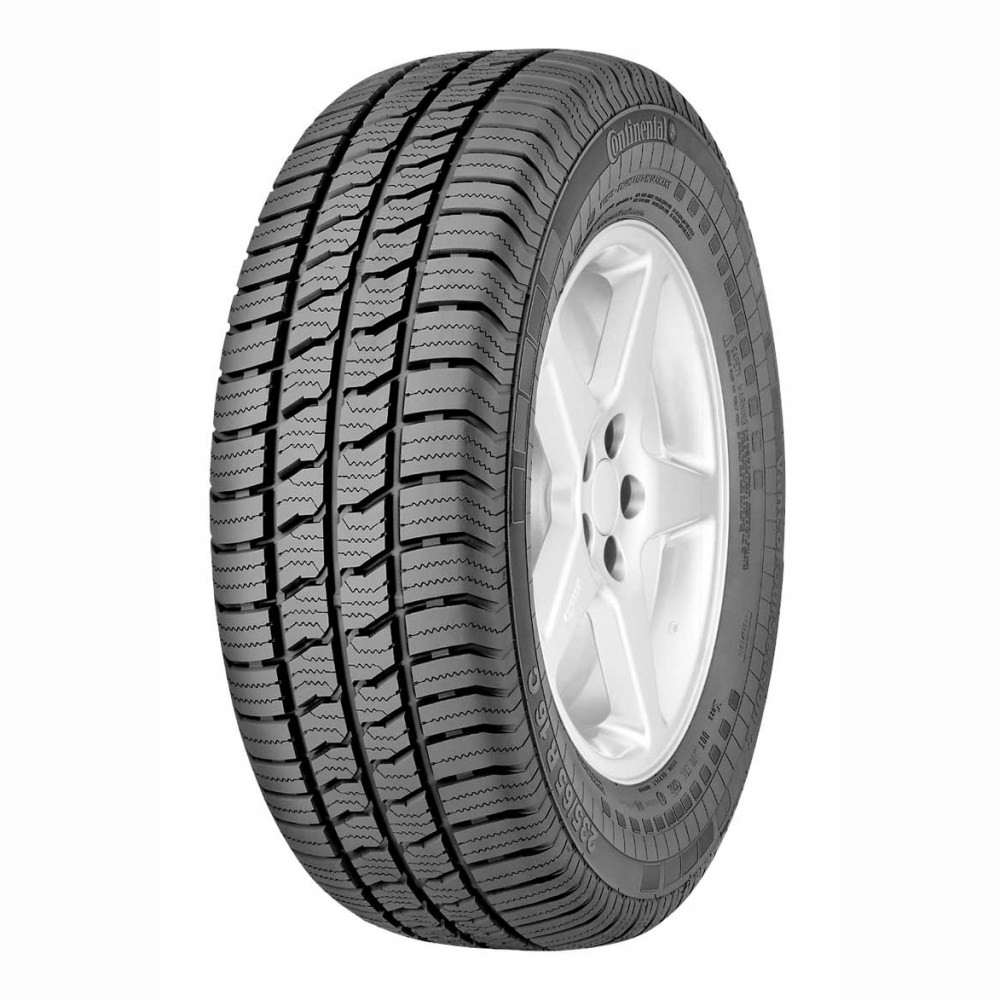
The tires of this model provide good behavior on the road, as well as a high margin of safety and power. Also, these tires provide high wear resistance and low rolling resistance. Special transverse elements on the tread provide excellent traction and self-cleaning capability.
Numerous water evacuation channels in combination with wide longitudinal grooves make the tires all-weather.
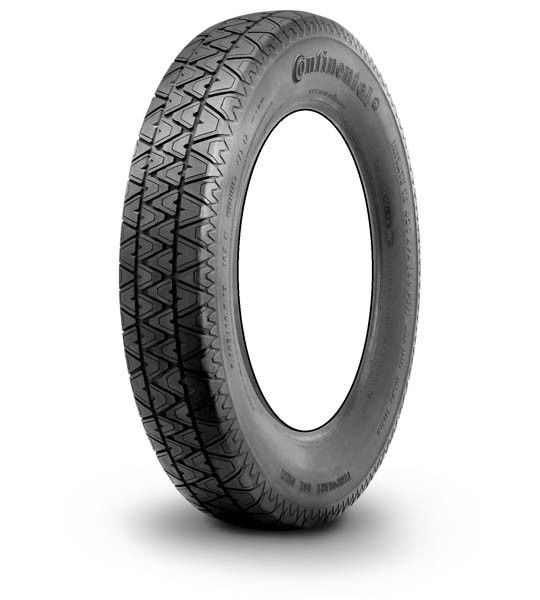
Tires from Continental embody the latest developments and technologies. These tires are used in cars to transport MPs and VIPs. This product is distinguished by a real excellent German quality, durability and excellent running characteristics.
Most of the German cars are equipped with these tires at the production stage. Excellent traction even on wet surfaces is provided by a special tread pattern.
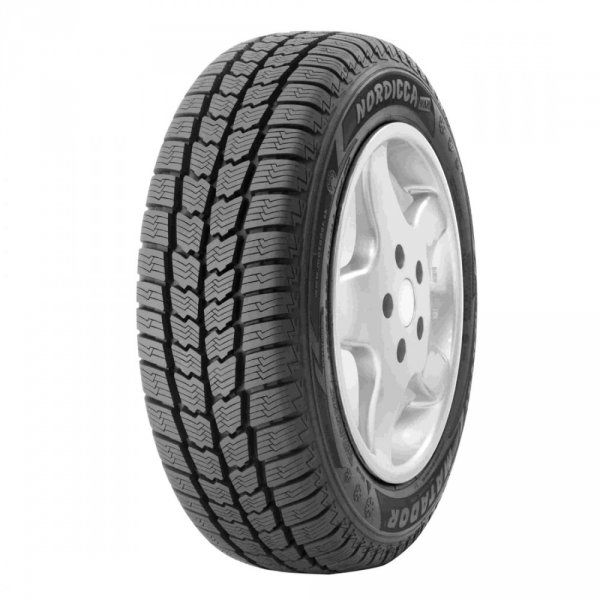
This non-studded winter tire is designed for small trucks and vans. The tread pattern of these tires is directional. Feature tires - high safety, excellent stability even at high speeds and durability. The tread pattern has a special system with 3D sipes. They significantly improve the grip properties of the wheels with the road. And the grooves have excellent self-cleaning abilities.




